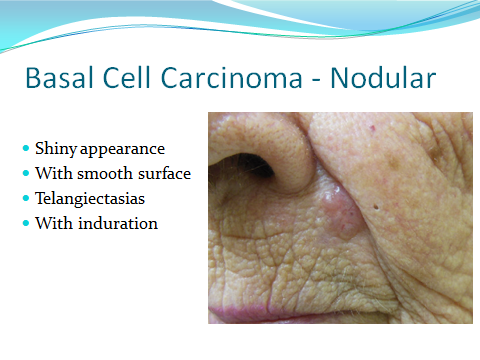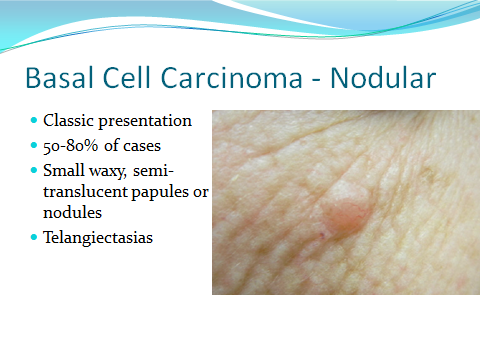Welcome to the DermacenterMD Blog
 The other D in Dermatology
The other D in Dermatology
Dysport: What is it and how does it work?
It is an advanced cosmetic product which helps in reducing wrinkles and signs of aging. It gives a more vibrant and youthful appearance to the face.
In certain areas of the body, including the face the effects of hormones, sun damage and increasing years can lead to change we do not want. Fortunately many of the signs which give away our years can be reversed. To get a more youthful, happy and pleasant appearance Dysport was developed.
It is a purified protein of Botulinum toxin which reduces the impulses sent down nerve endings to the muscles. In doing so it causes a relaxation of the muscles which keeps them from contracting and forcing unwanted wrinkles to appear. The product lasts about three to four months and then gradually wears off. This allows for a very natural appearance so friends and neighbors notice improvements, but have a hard time identifying what was done.
The procedure has minimal discomfort and takes only a few minutes to perform. At DermacenterMD Dysport and Botox injections are performed by Dr. Roger Moore. As a board certified dermatologist he is expertly trained in the skin, aging and cosmetic procedures. In addition to this he has gone to great lengths to advance his knowledge in these areas including advanced injector training courses only available to board certified dermatologists. Dr. Moore’s pleasant bedside manner and excellent skills create many loyal clients.
Call today for your consultation and evaluation.
574.522.0265
Looking and feeling your best can be only a phone call away!

Here is what you should know about skin cancer:
Be on the lookout for skin cancer! 1 in 3 people are estimated to have skin cancer in their lifetime. It can affect anyone at any age and with any skin type. You can never be too careful or too cautious. Taking care of your skin, like always remembering your sunscreen, and being educated about skin cancer are great ways to protect yourself and those you love.
Below are five different skin conditions to keep an eye out for when you exam you skin, as well as a short story that demonstrates the importance of knowing what to look for and being diligent in getting in to see your dermatologist for regular skin checks.
Different Types of Skin Cancer:
Basal Cell Carcinoma (BCC)
The most common cancer diagnosed in the U.S. These present as raised, pink, translucent, pearly nodules that may ulcerate and bleed. These can be found on sun exposed sites, but not always.
Squamous Cell Carcinoma (SCC)
Usually raised, pink nodules or patches that occur on sun exposed sites. These often occur with no symptoms and a small number can become invasive.
Melanoma
This cancer can become invasive and life threatening. Most are brown to black with irregular borders, but not always.
Be alert for the ABCDE’s:
Asymmetry
Border irregularity
Color variation
Diameter (larger than a pencil eraser)
Evolving or changing
Actinic Keratosis (AK)
These pre-cancers are caused by the sun and are often rough scaly bumps. Most occur on sun exposed sites and do have some risk for developing into SCCs.
Seborrheic Keratosis
These waxy tan to brown raised lesions are very common and benign. DermacenterMD considers these proof of wisdom since most occur as you become more fruitful and wise ( a.k.a. age).
That little pink spot was important?
A nice woman who lived downtown and liked to play bingo came in because a friend told her to get a red scaling rash on the left temple checked out. It had been there two months and she had tried several over the counter creams, including hydrocortisone and anti-fungus cream, but it would not go away completely. The spot never had bleeding or pain.
It was suspicious, so a small sample of skin was taken to be sent off to the lab, a procedure termed a biopsy. Most often the biopsies have minimal discomfort and can yield important information as in her case. The spot turned out to be a basal cell cancer. Yes, that little rash was a skin canÂcer. She is an example of why we need to 1) educate ourselves on what to look out for and 2) get regular dermatology skin examinations.
Basal cell and squamous cell carcinoma are the most common skin canÂcers and they can be treated easily if caught early. Dr. Moore specializes in a scar minimizing, low downtime treatment called Mohs Micrographic Surgery. This technique also provides the highest cure rate available. If you suspect cancer, call now to get your peace of mind and safety.
Our office can be reached at 574-522-0265.
6 Rules for Making Your Home Life Easier
Living with other people can sometimes be difficult. In his book How to Win Friends and Influence People, Dale Carnegie discusses several tips to making life at home, with your spouse or loved ones, easier:
1. Don't nag. Nagging is annoying. Make sure they understand what needs to be done, but try not to harass. This can cause a person to become irritated and less likely to do what you are asking.
2. Don't try to make your partner over. Let them be who they are. When someone feels comfortable expressing their true self, they will be happier.
3. Don't criticize. Instead, encourage and uplift.
4. Give honest appreciation. Everyone wants to feel valuable and appreciated. Sometimes all it takes is a simple word of appreciation and gratitude from a loved one to change a person’s entire outlook.
5. Pay little attentions. Noticing details of someone else’s life makes them feel special and lets them know you care.
6. Do little things useful things for your partner. If you know your partner hates taking the time to fill the coffee maker with grounds and brew their coffee in the morning, get it all set up for them the night before so when they wake up, all they have to do is hit the power button. Or take out the trash and do the dishes when it’s not your turn. Taking time to think about ways to make your partner’s life easier will show them how much you care. And doing little things for them can make a huge difference.
 Going to work can be a struggle some days. Sometimes you just don’t feel like facing that long to-do list you know was left waiting for you on your desk. Often times we can get burnt out or discouraged if we feel like we’re not making meaningful progress in our daily tasks. It is important to take time to reflect on the “small wins” that you accomplish at work. This can help you to fell more satisfied with the work you’re completing and cause you to perhaps even become more productive.
Going to work can be a struggle some days. Sometimes you just don’t feel like facing that long to-do list you know was left waiting for you on your desk. Often times we can get burnt out or discouraged if we feel like we’re not making meaningful progress in our daily tasks. It is important to take time to reflect on the “small wins” that you accomplish at work. This can help you to fell more satisfied with the work you’re completing and cause you to perhaps even become more productive.
In a Harvard Business review article entitled The Power of Small Wins, Teresa Amabile and Steven J. Kramer explain that the key to motivating performance is supporting progress in meaningful work. The authors conducted an experiment where they asked creative professionals to keep a work diary to record their emotions and accomplishments at work. After studying these diaries, they identified the progress principle, which states:
“Of all the things that can boost emotions, motivation, and perceptions during a workday, the single most important is making progress in meaningful work. And the more frequently people experience that sense of progress, the more likely they are to be creatively productive in the long run.”
In order to garner more meaning from the work your do, keep a work diary. It can help you to appreciate just how meaningful and effect the work is that you do. It can help you to see more of the big picture of your career. It will allow you to reflect on what you’ve already accomplished and feel good about that. Take time to appreciate your hard work. You will also be able to focus yourself on what still needs to be accomplished. Try keeping a work journal for a month and take time every week to review what you’ve accomplished. Appreciating the small wins will help you to be more motivated and find meaning in what you do.


Basal cell carcinoma is not an uncommon cancer to occur on the lip. The lips are often overlooked when looking for non-melanoma skin cancers. However, given their highly visible location, the majority of lip cancers are easily detectable and treatable at an early stage. A raised pink or pearly bump on or around the lip can be a possible sign of skin cancer.
Cancer of the lips comprises approximately 0.6 percent of all cancers in the U.S. It is the most common malignant lesion of the oral cavity, constituting 25-30 percent of all oral cavity cancer cases. Studies have shown that males are 3-13 times more likely to develop lip cancers, likely due to occupation-related sun exposure combined with greater alcohol and tobacco use. The lower lip is approximately 12 times more likely to be affected, because it often incurs more sun exposure.
The best treatment in delicate areas like this is done with Mohs Micrographic Surgery. With Mohs surgery, less tissue is taken, and therefore there is usually less scarring. This form of treatment also offers up to a 99% cure rate, making it the most effective treatment available for basal cell carcinoma.
This website includes materials that are protected by copyright, or other proprietary rights. Transmission or reproduction of protected items beyond that allowed by fair use, as defined in the copyright laws, requires the written permission of the copyright owners.
Archive:
Tags
- dry skin (2)
- moisturizer (1)
- sensitive skin (3)
- PA (2)
- Skincare (2)
- skin cancer (29)
- cancer (6)
- facts (1)
- skin (19)
- dermatology (22)
- skin care (19)
- cosmetic (2)
- wrinkles (1)
- Botox (4)
- Dysport (3)
- sleep (1)
- look good (1)
- daily routine (1)
- healthy lifestyle (1)
- doctor (2)
- patient (1)
- sun protection (5)
- sunscreen (14)
- aging dermatology (1)
- providers (1)
- tanning (2)
- sun (6)
- UVA rays (2)
- UVB rays (2)
- melanoma (10)
- Acne (2)
- Treatment (2)
- sunscren (1)
- sun exposure (5)
- Melanoma Monday (2)
- Skin Cancer Awareness Month (1)
- education (2)
- skin cancer specialist (1)
- basal cell carcinoma (1)
- squamous cell carcinoma (1)
- ingredients (2)
- improve your smile (1)
- cosmetics (1)
- laser (1)
- fillers (2)
- sunburn (3)
- avoid the sun (1)
- hat (1)
- sun clothing (1)
- SPF (1)
- Rosacea (3)
- NP (1)
- Nurse Practitioner (1)
- mid-level provider (1)
- physician (1)
- dermatologist (6)
- cosmetic dermatology (4)
- anti-aging (2)
- youthful looks (1)
- Eczema (2)
- rash (2)
- itch (1)
- the rash that itches (1)
- reduce itch (1)
- itching (1)
- getting along with others (1)
- basal cell (2)
- squamous cell (2)
- detection (1)
- Mohs surgery (2)
- photoaging (1)
- Inspiring (1)
- word of the day (1)
- inspiration (3)
- uplifting (1)
- protection (4)
- lips (1)
- reduce wrinkles (1)
- look younger (1)
- encouragement (1)
- never give up (1)
- you can do it (1)
- medical school (1)
- dreams (1)
- brown spots (1)
- moles (2)
- liver spots (1)
- age spots (1)
- Abe Lincoln (1)
- life lessons (1)
- lip cancer (1)
- health (12)
- motivation (1)
- work (1)
- people (2)
- home life (1)
- lifestyle (1)
- ABCDEs of Melanoma (1)
- mole (1)
- skin check (2)
- skin facts (2)
- odd (1)
- fun (1)
- interesting (1)
- lung cancer (1)
- disease (1)
- Christmas (2)
- gifts (1)
- sun burn (1)
- winter skin tips (1)
- itchy skin (1)
- winter skin (1)
- myths (1)
- myth busted (1)
- skin protection (1)
- sunscreen safety (1)
- specialist (1)
- red skin (1)
- irritation (1)
- feel good (1)
- helping (1)
- help (1)
- helping others (1)
- treatment options (1)
- skin health (9)
- Vitamin D (2)
- tanning beds (1)
- skin health. dermatology (1)
- sunshine (1)
- awareness (1)
- prevention (1)
- sun damage (3)
- connections (1)
- working together (1)
- health care (1)
- biotin (1)
- medical (1)
- aging (1)
- elkhart (1)
- Roger Moore (1)
- check (1)
- skin type (1)
- skin cancer prevention (1)
- gift guide (1)
- Christmas gift guide (1)
- Dr. Roger Moore (1)
- holidays (1)
- family history (1)
